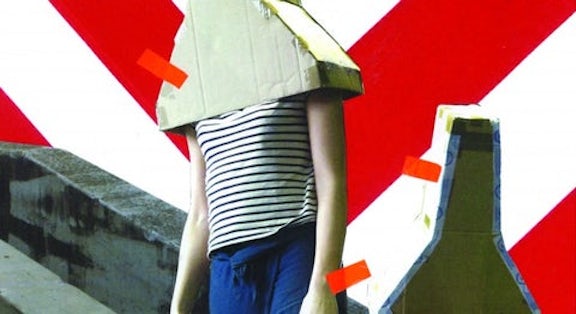Nat Gras

Choreographer Goele Van Dijck first studied to become a nursery teacher before training as a dance instructor at the Fontys Academy for Teacher Training in Dance in Tilburg. At the begin of the 2000s, there were lots of performances for pre-schoolers or infants but no performing arts options for toddlers. Goele Van Dijck decided to fill this gap and in 2002 she founded her company Nat Gras, with the aim of creating dance productions of artistic quality that were also accessible for an audience aged two years (and older). Meanwhile Nat Gras, along with kabinet k, has now evolved to become one of the pioneers in Flanders in the field of dance for children.
Proximity, especially for small children, is extremely important for them to feel involved in a piece and to be able to hold their attention for that much longer.
Sensory perception and interaction are very important to Goele Van Dijck. When the children arrive in the theatre they may even do so via the set. Van Dijck would never entertain the idea of having the toddlers sit in folding velvet chairs arranged far from the stage: the children and their parents sit close to the dancers and usually on both sides of the performance area. Proximity, especially for small children, is extremely important for them to feel involved in a piece and to be able to hold their attention for that much longer. In Muurtje Muurtje the children were also called on to help with the stage set, to unfold fences and planks, and they were allowed to play in the set after the performance. At the end of Pommeliere parents were given deliciously sweet smelling apples to peel and hand out to their children.
As you can see in both clips, wonder and imagination are extremely important in dance for young children. Together with the dancers they discover the unexpected forms that walls can take on or all the different games that can be played with apples. Recognizability is also important. The choreography in Pommeliere is based on everyday movements such as walking and throwing, whereas in Muurtje Muurtje hiding and reappearing are recurring actions. Two of the first shows that Goele Van Dijck created, Koeiemorgen and Schaapwel, focused respectively on rituals related to getting up and going to bed, two themes with which children are quite familiar (which is certainly also true of their parents).
Her years of experience as a teacher and her nursery teacher training mean that Goele Van Dijck knows perfectly well how to stimulate young children and inspire them to play. In some productions a sensory play area was even set up at the end, in which children and their chaperones could enjoy themselves in installations and perform tasks related to the show’s content. In this clip from Schaapwel you see how the young spectators also become participants and play with soap, mirrors and nightlights, to finally crawl under the blankets.
Her years of experience as a teacher and her nursery teacher training mean that Goele Van Dijck knows perfectly well how to stimulate young children and inspire them to play.
Goele Van Dijck is also one of our country’s pioneers in ‘inclusive dance’. This is a form of dance in which dancers with and without a disability perform together, according to their ability. In 2004, she created Lilium in association with Iris Bouche, a much-acclaimed performance at fABULEUS, and in 2010 she created Kleefkruid with Frauke Mariën, both with a group of youngsters. In autumn 2015, she developed the show Pitstop for Holland Dance with Jasper Dzuki Jelen and Mojra Vogelnik Skerlj. In all these productions dancers with a physical disability perform alongside dancers without a disability. Goele Van Dijck: "Inclusive dance turns my whole idea of dance and of how I approached dance upside down. It just concerns people. And any performance that concerns people is interesting. Whether they are incredibly agile dancers or highly immobile, it's not important to me, as long as they have a story to tell." (Quoted from a publication by Danspunt about inclusive dance).
Van Dijck: "Inclusive dance turns my whole idea of dance and of how I approached dance upside down. It just concerns people. And any performance that concerns people is interesting. Whether they are incredibly agile dancers or highly immobile, it's not important to me, as long as they have a story to tell."
Goele Van Dijck continues to explore the possibilities of dance for toddlers and pre-schoolers in her productions. In recent years, she worked with other companies that create for this target audience, such as with the music theatre company Pantalone for Pommeliere and with the puppet theatre De Maan for the extraordinary, fantasy-rich production De Steltenloper, after the book with the same name by Mattias De Leeuw. Goele Van Dijck also regularly makes time for extensive research, such as into the question of how rough and tough stage dance can be for toddlers. This research resulted in the production Wegversperring, in which two dancers play a dangerous game with concrete bricks, cordon tape and other obstacles - which, of course, the toddlers can also try out afterwards.
AUTHOR:
FILIP TIELENS
Filip Tielens works as an artistic collaborator at Destelheide and as a theatre journalist for different media such as Klara, Theaterkrant and Cutting Edge. With his art critic collective De Zendelingen he has developed various projects in which many different opinions are unlocked using a multimedia approach.

